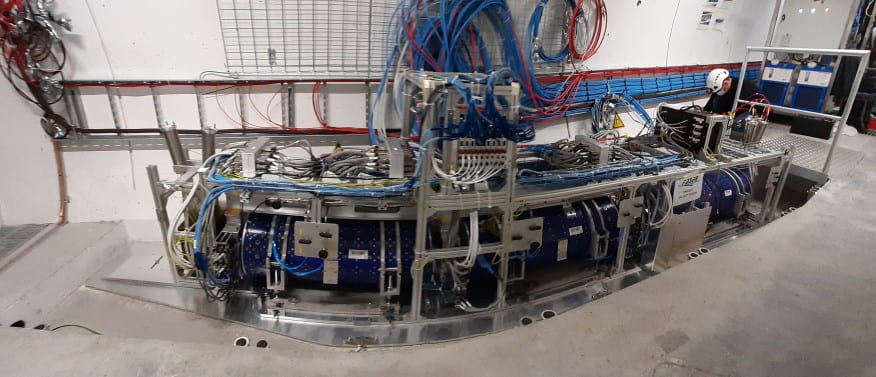The Institute for Fundamental Science (IFS) enhances the experimental, theoretical, and astronomy research activities at the University of Oregon. IFS is one of several centers and institutes supported by the Office of the Vice President for Research and Innovation, and maintains close relationships with the Department of Physics, the Department of Chemistry, the Department of Mathematics, and the Materials Science Institute.
The institute hosts visiting scientists, supports graduate and undergraduate student research, facilitates interaction between the experimental activities and theoretical investigations of IFS members, and fosters communication of research to the broader community.
IFS members have major involvement in international collaborations including the ATLAS and FASER Experiments at CERN, LIGO’s gravitational wave observatories, and others. We have vigorous programs of research in astronomy and astrophysics; condensed matter theory and statistical mechanics; data science; mathematics; particle theory; quantum information and quantum optics; and the International Linear Collider project.
Center Activities

What Oregonians can expect during upcoming solar eclipse
3 April 2024 || Source (KLCC)
For the third time in seven years, Oregonians will get to see a solar eclipse. It won’t be the total eclipse of the sun witnessed in 2017, nor the ring of fire from last year’s annular eclipse. But on Monday morning, sky-watchers will have a reason to look up.
In his office at the University of Oregon, astronomer Scott Fisher is clicking around on a sky simulator.
“Every time I click—there goes the moon in front of the sun. And I wanted to confirm when the maximum eclipse is gonna be,” he said. “And it’s going to be almost exactly 11 a.m.
...
IFS seminars will resume in fall!
Have a good summer!
Webb’s image of NGC 1300 shows a face-on barred spiral galaxy anchored by its central region, which is circular and shows a bright white point at the center with a light yellow circle around it. The central core is tiny compared to the rest of the galaxy. The core extends into the galaxy’s prominent diagonal bar structure, which is filled with a blue haze of stars. Orange dust filaments cross the bar, extending diagonally to the top and bottom, connecting the yellow circle in the central core to the galaxy’s spiral arms. There are two distinct orange spiral
...
CERN70: The nucleus as a laboratory
2 May 2024
Helge Ravn was part of the ISOLDE group from the beginning
When ISOLDE began operations at CERN in 1967, it was unique in the world
Source || Part 8 of the CERN70 Series
When the Isotope Separator On-Line (ISOLDE) began operations at the Synchrocyclotron (SC) in 1967, it was unique in the world. Like other laboratories, a proton beam from an accelerator was directed onto a target to create rare radioactive isotopes of various elements on the periodic table. But ISOLDE used an innovative technique to solve the main difficulty: selecting isotopes of interest. Using a combination
...